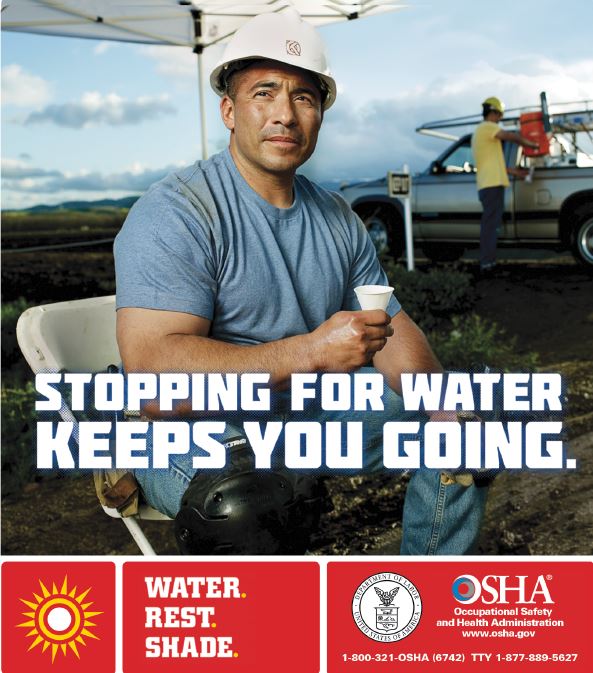By Angela Childers for BusinessInsurance.com After spending the past few months developing a COVID-19 emergency temporary standard, the Occupational Safety and Health Administration has turned its attention to safety issues in the construction industry. In early June, OSHA announced that it would begin a “Weekend Work” enforcement program targeting construction sites on Saturdays and Sundays in a “proactive effort to identify hazardous worksites and to ensure workers end their shifts safely.” This effort specifically seeks to address potential fall protection violations — the most-cited OSHA violation for a decade — and trenching violations, which have also consistently been named by the agency as among the top construction violations. Read more here>>>
Employee Benefits Strategic Partnership
Providing and managing a comprehensive employee benefits program is more complex – and more important – than ever before. Murray’s Benefits Team has always been focused on providing innovative technology, human resources support, and a commitment to service to help clients of all sizes maximize the value of their employee benefits investment. On July 1 we are taking our client commitment to the next level! Two premier Employee Benefit Teams are coming together under the AssuredPartners umbrella: Murray’s Employee Benefits Team and the former StoudtAdvisor’s Team, who has been part of AssuredPartners for nearly six years. Through this strategic partnership, we will work together at AP Lititz to form one of the largest and most experienced Employee Benefits Teams in …
Latest Trends in the Industrial Real Estate Sector Here to Stay
By John Dettleff, Senior Managing Director, Brokerage, JLL for AreaDevelopment.com The United States will need one billion square feet of industrial space over the next five years to keep up with e-commerce demand — one billion! Throughout the COVID-19 pandemic, much attention has been paid to the future of office, but the industrial market is experiencing a similar tectonic shift. Prior to the onset of the coronavirus, the increase in online sales was driving growth in the industrial real estate sector. JLL found that nearly 35 percent of all industrial leasing was attributed to e-commerce pre-pandemic. After March 2020, as online sales experienced an explosion in growth, demand for distribution space skyrocketed, accounting for the majority of all industrial leasing …
OSHA’s Long-awaited ETS Only Applies to Health Care Workers
By Louise Esola for BusinessInsurance.com The Occupational Safety and Health Administration on Thursday released the details of its long-awaited Emergency Temporary Standard, which it says will only apply to health care workers. The agency said it will follow up with separate guidance for workers in such sectors as manufacturing, meat and seafood processing, grocery and retail. The ETS, which has been submitted to the Office of the Federal Register, includes such requirements as sanitation, time off for illness or vaccinations, anti-retaliation measures, and personal protective equipment while working with COVID-19 patients. The guidance closely resembles rules issued by the Centers for Disease Control and Prevention. Get more details>>>
Major Meat Producer JBS USA Hit by Cyberattack
By Rob McLean, Alexis Benveniste and Allie Malloy for CNN.com Major meat producer JBS USA suffered a cyberattack on Sunday. The attack affected servers supporting its IT systems in North America and Australia, the company said in a news release. “The company is not aware of any evidence at this time that any customer, supplier or employee data has been compromised or misused as a result of the situation,” JBS said. “Resolution of the incident will take time, which may delay certain transactions with customers and suppliers.” JBS USA is part of JBS Foods, which it says is one of the world’s largest food companies. It has operations in 15 countries and has customers in about 100 countries, according to …
Five Critical COVID-19 Risks for the Manufacturing Industry
By Katie Dwyer for Risk&Insurance.com COVID-19 is impacting every business in some way, but manufacturers are under unique pressure. Though many have been forced to shut down, others have been called upon to help produce much-needed medical supplies. All are facing challenges with supply chain management, security, and the continual obligation to keep workers as safe as possible. Here are 5 risks facing manufacturers as they work through the pandemic: Supply Chain Disruption Economic Recession Vulnerabilities in Cyber Security Patent Infringement Liability Widespread Worker Illness Click for more details>>>
Ransomware Continues to Lead Cyber Attacks
By Jody Westby for LeadersEdge.com Experts predict that a company will be hit with ransomware every 11 seconds and the cost of these attacks will be $20 billion by the end of 2021. Why has ransomware been so successful? Two reasons: (1) companies have not developed and tested backup/recovery plans that enable them to fully restore systems encrypted by ransomware, and (2) they have not encrypted their data at rest. If an organization hit by ransomware has encrypted its data at rest and has full backup/restoration capabilities, it can just restore its systems, and the cyber criminals have to go elsewhere. The reality, however, is that many companies rolled the dice and chose not to fund the development of backup/recovery …
Water, Rest, Shade: Keeping Workers Safe in the Heat
Sponsored by Occupational Safety and Health Administration, US DOL Every year, dozens of workers die and thousands more become ill while working in extreme heat or humid conditions. There are a range of heat illnesses and they can affect anyone, regardless of age or physical condition. The informal kickoff date for the campaign is the Friday before Memorial Day – this year, Friday, May 22, 2021. Employer Responsibility to Protect Workers Under OSHA law, employers are responsible for providing workplaces free of known safety hazards. This includes protecting workers from extreme heat. An employer with workers exposed to high temperatures should establish a complete heat illness prevention program. Provide workers with water, rest and shade. Allow new or returning workers …
DOL Announces New Cybersecurity Guidance For Plan Sponsors, Plan Fiduciaries, Record Keepers, Plan Participants
News Release by US Department of Labor The U.S. Department of Labor announced new guidance for plan sponsors, plan fiduciaries, record keepers and plan participants on best practices for maintaining cybersecurity, including tips on how to protect the retirement benefits of America’s workers. This is the first time the department’s Employee Benefits Security Administration has issued cybersecurity guidance. This guidance is directed at plan sponsors and fiduciaries regulated by the Employee Retirement Income Security Act, and plan participants and beneficiaries. As of 2018, EBSA estimates that there are 34 million defined benefit plan participants in private pension plans and 106 million defined contribution plan participants covering estimated assets of $9.3 trillion. Without sufficient protections, these participants and assets may be …
Six Components of an Effective Return-to-Work Program
By Tara Crisp-Schwartz for AssuredPartners.com One of the first steps in evaluating your current Workers’ Compensation and Return-to-Work (RTW) program is reviewing and revising current job descriptions to ensure they are EEOC and ADA-compliant. Once this task is complete, you can pre-plan for your return-to-work program. Why pre-plan? If you have not had a clear, concise discussion with your management team on RTW, you may get delayed when it comes time to implement the program for your injured worker. Read the six steps>>>










